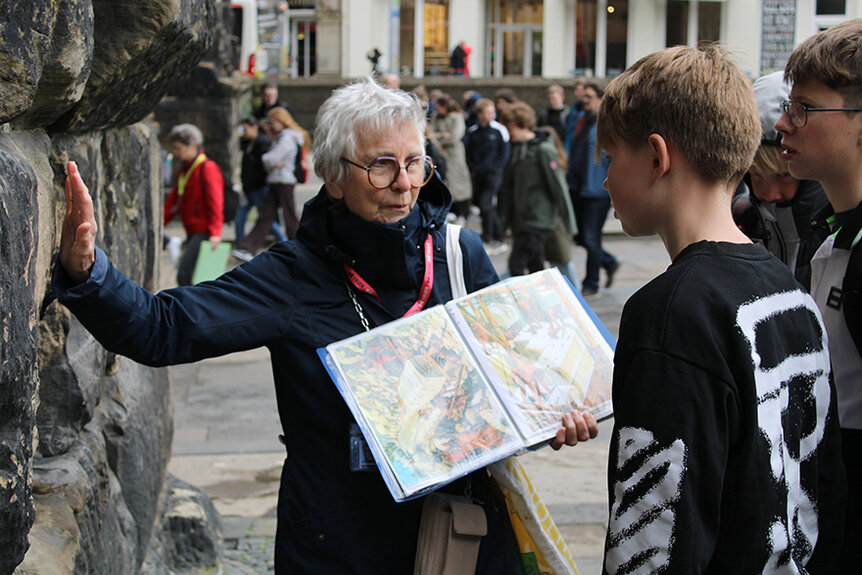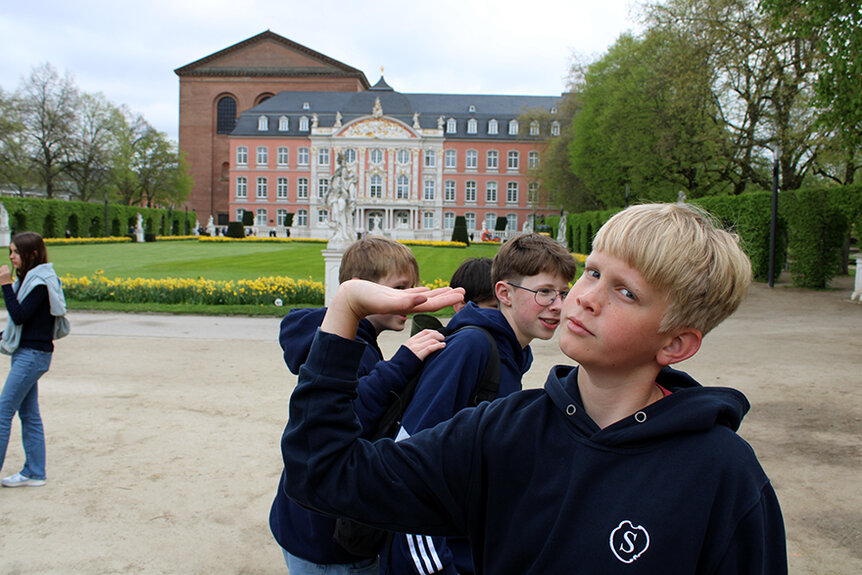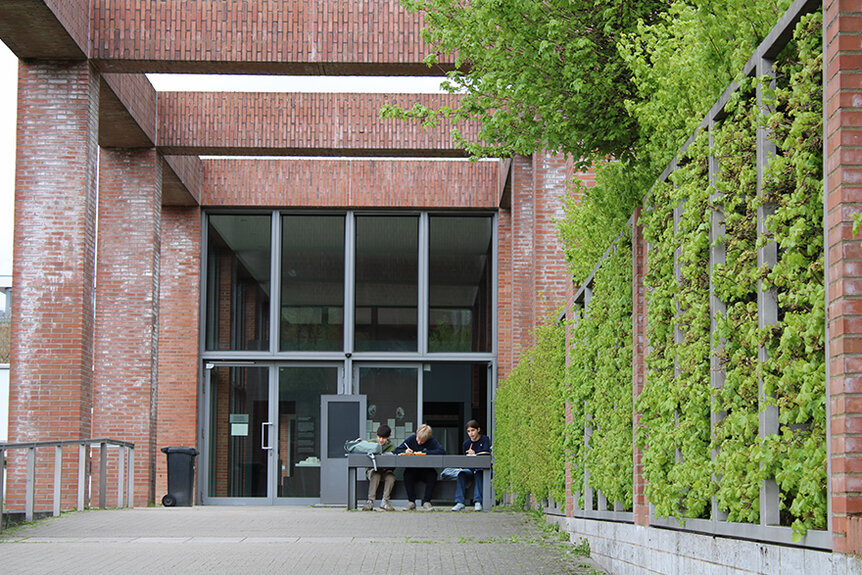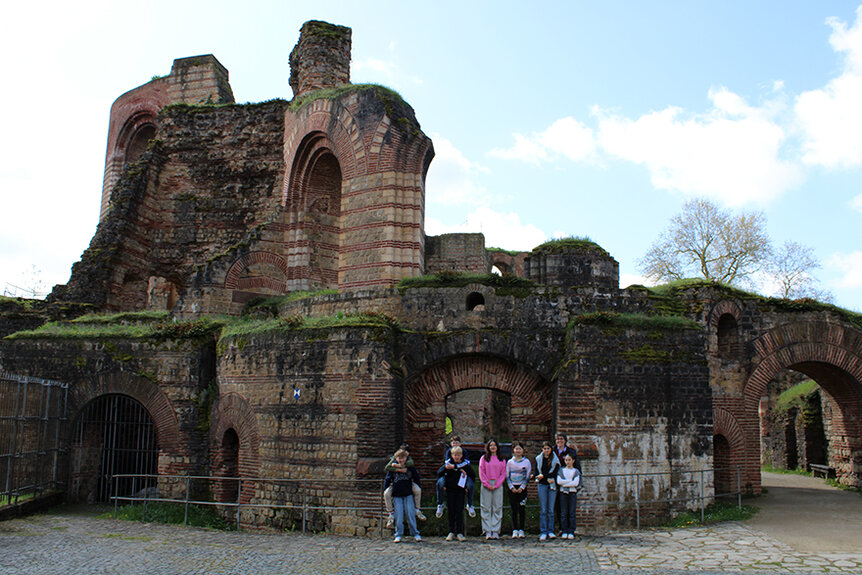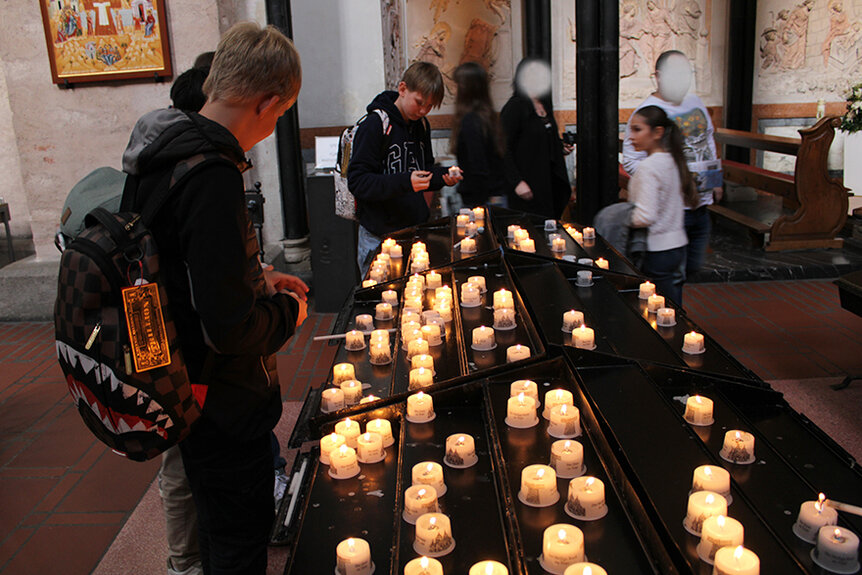The Gold Treasure
The gold treasure was the best guarded, consisting of over 2000 coins.
It was found in 1993 in Feldstraße in Trier and more than 16 workers were needed to secure the coins. The main finder received a reward of DM 10,000. That was a lot of money at the time, but the gold treasure is worth much more. In December 2023, the gold treasure was estimated to be worth 1.217 million US dollars, as it is a historical document. (Richard)
The Amphitheatre
How did it come about that the gladiator Valerius had to fight his friend Metellus? This story was told to us by the actor Isaac Boateng in the Trier Amphitheatre.
The gladiator was a slave, but his master disappeared and dismissed his slaves. How was his life to continue? Life as a gladiator? The amphitheatre was the place where gladiator fights and animal fights took place, organized by politicians to secure votes from the citizens. (Stephanie)
Many gladiators died in these games, but mostly animals. As the training of gladiators was very expensive, everyone was interested in them going into many fights and not dying. So Valerius hoped to achieve fame and fortune as a gladiator. This arena was special because it was one of four city gates. (Richard)
Mosaic
The Polydos mosaic was recently renovated. It is as big as a classroom in our school and shows the charioteer Polydos. (Emilia)
The Basilica of Constantine
We would never have thought that the Porta Nigra, the great Roman city gate, would fit into the Basilica of Constantine twice. Today's Protestant church was the emperor's throne room in the 4th century. There was an illusion in the great basilica that we almost couldn't believe: The depth is increased by an optical illusion; both the windows of the apse and the niches below it become smaller and smaller towards the centre, reinforcing the impression of length. This made Emperor Constantine feel much taller and stronger than he was.
There were candles in the Basilica of Constantine that we could light, as it is now a church. (Elisha.)
Emperor Constantine
You could see traces of the Emperor Constantine everywhere. The foot of the larger-than-life statue was particularly striking. Emperor Constantine resided in Trier and turned the city into "Rome on the Rhine". He was the first emperor to be baptized and thus paved the way for Christianity. (Stephanie)
The Thermal Baths
The water for the thermal baths came from the River Ruwer. Three thermal baths can still be seen today, which were an expression of luxury and Roman culture. The Barbara Baths were the second-largest thermal baths, with an area of 42,000 square metres, roughly the size of 6 football pitches. While people enjoyed bathing in the Barbara Baths, the Imperial Baths were for the court. When people saw the Imperial Baths, they thought that the Imperial Baths were a palace. The Barbara Baths, the thermal baths at the cattle market and the Imperial Baths were all gifts from Emperor Constantine to make people feel as comfortable in Trier as they did in Rome (Lexuan)
The Porta Nigra
The Porta Nigra is the best-preserved Roman city gate north of the Alps. The name Porta Nigra is Latin and translates as "Black Gate". The originally white sandstone has darkened in colour due to the wind and weather. The stones were not held together with mortar but stabilized with metal rods. It is the symbol of Trier and was built as a city gate in 170 AD.
The monk Simeon had himself engraved on the side of the Porta Nigra for 5 years (until his death). When he was hungry or thirsty, he would drop a basket outside and people passing by would put something in the basket for him.
As a result, the gate was converted into a church in the 11th century. In 1804, however, Napoleon had the ecclesiastical elements of the gate torn down. The rest was then used as a town gate. (Leon and Stephanie)
The Roman Bridge
How many cars pass the Roman Bridge every day without realising that the bridge pillars date back to Roman antiquity? The first bridge was built in 17 BC. The Trier Roman Bridge over the Moselle is the oldest Roman bridge north of the Alps. (Vasilisa)
Photos: Lukas Huber



